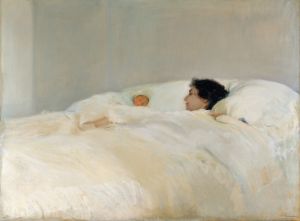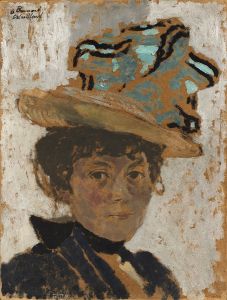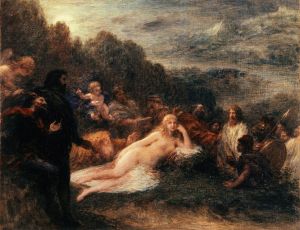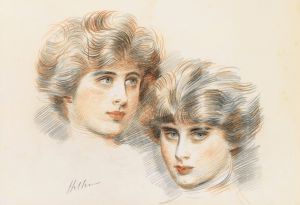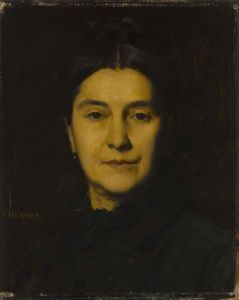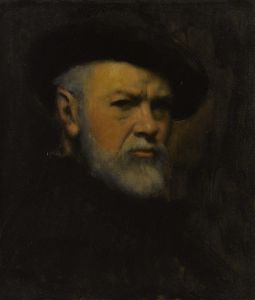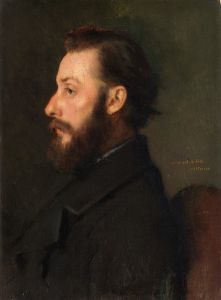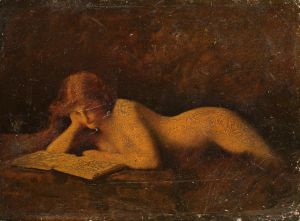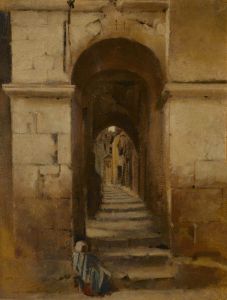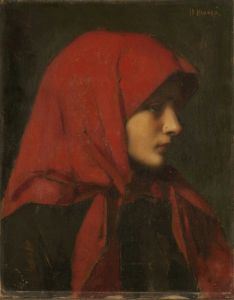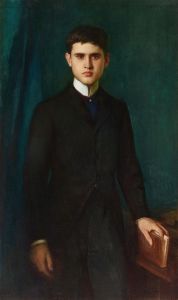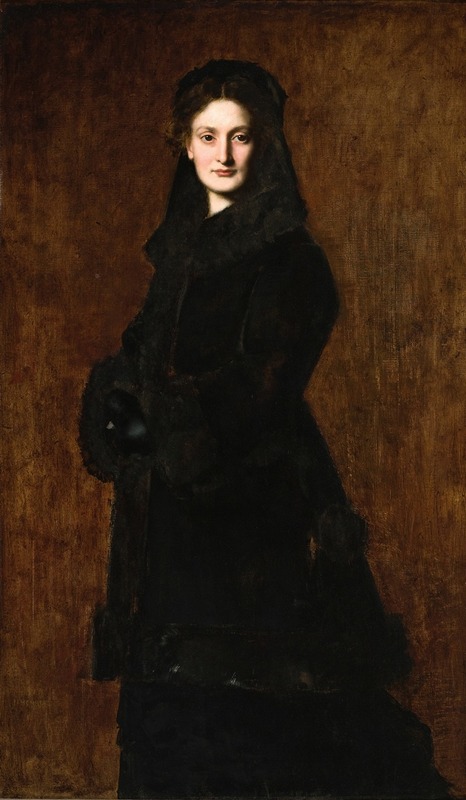
Portrait of Madame Paul Duchesne-Fournet
A hand-painted replica of Jean-Jacques Henner’s masterpiece Portrait of Madame Paul Duchesne-Fournet, meticulously crafted by professional artists to capture the true essence of the original. Each piece is created with museum-quality canvas and rare mineral pigments, carefully painted by experienced artists with delicate brushstrokes and rich, layered colors to perfectly recreate the texture of the original artwork. Unlike machine-printed reproductions, this hand-painted version brings the painting to life, infused with the artist’s emotions and skill in every stroke. Whether for personal collection or home decoration, it instantly elevates the artistic atmosphere of any space.
The "Portrait of Madame Paul Duchesne-Fournet" is a notable work by the French painter Jean-Jacques Henner. Henner, born on March 5, 1829, in Bernwiller, Alsace, was a prominent figure in 19th-century French art, known for his portraits, nudes, and religious subjects. He studied at the École des Beaux-Arts in Paris and won the prestigious Prix de Rome in 1858, which allowed him to study in Italy and significantly influenced his artistic style.
The portrait in question depicts Madame Paul Duchesne-Fournet, whose identity is tied to her husband, Paul Duchesne-Fournet. Unfortunately, detailed biographical information about Madame Duchesne-Fournet herself is scarce, and she is primarily known through this portrait. Henner's work is characterized by its soft, almost ethereal quality, achieved through his masterful use of chiaroscuro and a limited color palette, which is evident in this portrait.
In the "Portrait of Madame Paul Duchesne-Fournet," Henner employs his signature style to create a serene and introspective image. The painting showcases his ability to capture the delicate features and subtle expressions of his subjects. Madame Duchesne-Fournet is depicted with a calm and composed demeanor, her gaze directed slightly away from the viewer, adding a sense of contemplation and depth to the portrait. The background is kept simple and dark, which serves to highlight the subject's face and upper body, drawing the viewer's attention to her expression and the fine details of her attire.
Henner's technique involves the use of soft, blended brushstrokes that give the portrait a smooth, almost velvety texture. This approach not only enhances the lifelike quality of the subject's skin but also imparts a timeless, classical feel to the painting. The subtle play of light and shadow across Madame Duchesne-Fournet's face and clothing further adds to the three-dimensionality and realism of the portrait.
The "Portrait of Madame Paul Duchesne-Fournet" is an excellent example of Henner's skill in portraiture and his ability to convey the personality and inner life of his subjects. It reflects the artist's deep understanding of human anatomy and his meticulous attention to detail, which are hallmarks of his work. Henner's portraits often evoke a sense of quiet dignity and introspection, qualities that are clearly present in this painting.
Jean-Jacques Henner continued to enjoy a successful career throughout his life, receiving numerous accolades and commissions. He was elected to the Académie des Beaux-Arts in 1889 and was awarded the Grand Cross of the Legion of Honour in 1903. Henner passed away on July 23, 1905, leaving behind a rich legacy of artworks that continue to be celebrated for their beauty and technical excellence.
The "Portrait of Madame Paul Duchesne-Fournet" remains an important piece within Henner's oeuvre, exemplifying his mastery of portrait painting and his ability to capture the essence of his subjects with grace and sensitivity.





